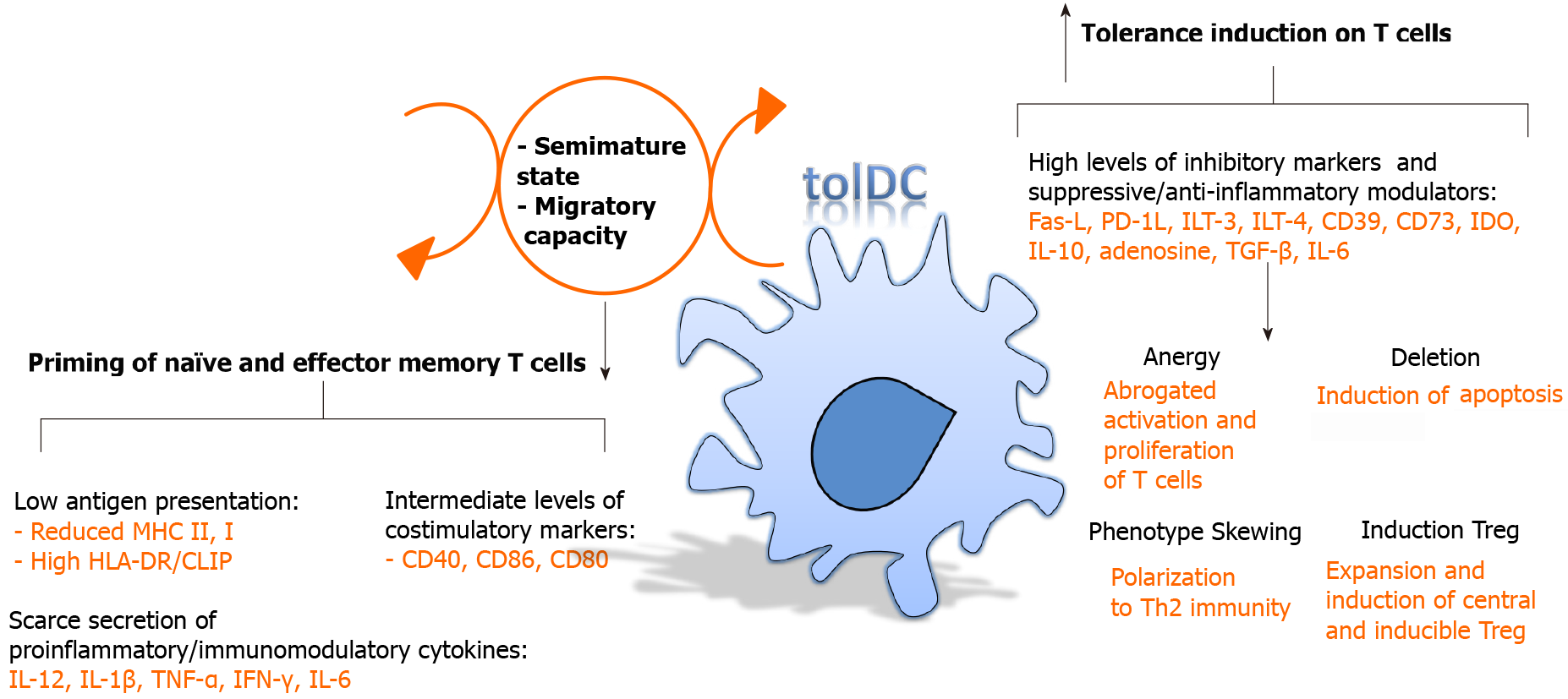Copyright
©The Author(s) 2021.
World J Diabetes. May 15, 2021; 12(5): 603-615
Published online May 15, 2021. doi: 10.4239/wjd.v12.i5.603
Published online May 15, 2021. doi: 10.4239/wjd.v12.i5.603
Figure 1 Phenotypic and functional hallmarks describing the immunobiology of the tolerogenic state of dendritic cells.
Tolerogenic dendritic cells (tolDCs) display a semimature state with high antigen uptake capability and bear low/intermediate surface levels of factors essential for T cell priming. In contrast, tolDCs bear high surface levels of inhibitory markers, allowing them to inhibit autoreactive T cells. Further, tolDCs display reduced secretion of inflammatory/immunomodulatory agents accompanied by the high secretion of anti-inflammatory/suppressive modulators. All those features are essential for inducing specific tolerance for self, microbiome, and environmental derived antigens by mechanisms such as anergy, deletion, phenotype skewing, and/or expansion of regulatory T cells. Additionally, tolDCs display optimal migratory capability, which has been documented to be essential to inducing periphery tolerance in vivo. HLA: Human leukocyte antigen; IFN: Interferon; IL: Interleukin; TGF: Transforming growth factor; tolDC: Tolerogenic dendritic cells; TNF: Tumor necrosis factor; MHC: Major histocompatibility complex; PD-L1: Programmed death-ligand 1.
- Citation: Ríos-Ríos WJ, Sosa-Luis SA, Torres-Aguilar H. Current advances in using tolerogenic dendritic cells as a therapeutic alternative in the treatment of type 1 diabetes. World J Diabetes 2021; 12(5): 603-615
- URL: https://www.wjgnet.com/1948-9358/full/v12/i5/603.htm
- DOI: https://dx.doi.org/10.4239/wjd.v12.i5.603









